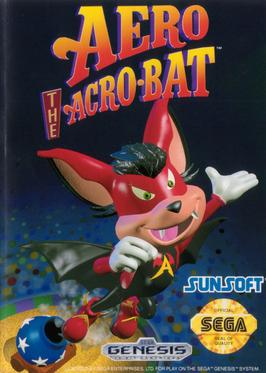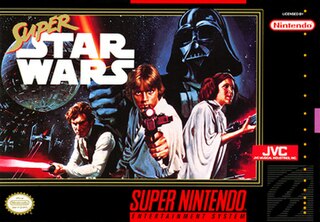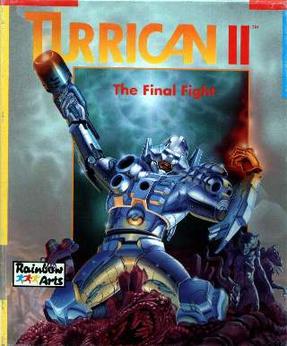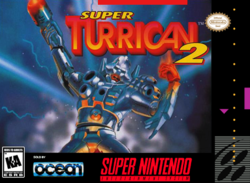
The Super Nintendo Entertainment System, commonly shortened to Super Nintendo, Super NES or SNES, is a 16-bit home video game console developed by Nintendo that was released in 1990 in Japan and South Korea, 1991 in North America, 1992 in Europe and Oceania and 1993 in South America. In Japan, it is called the Super Famicom (SFC). In South Korea, it is called the Super Comboy and was distributed by Hyundai Electronics. The system was released in Brazil on August 30, 1993, by Playtronic. In Russia and CIS, the system was distributed by Steepler from 1994 until 1996. Although each version is essentially the same, several forms of regional lockout prevent cartridges for one version from being used in other versions.

Tetris Attack, also known as Panel de Pon in Japan, is a puzzle video game developed by Intelligent Systems and published by Nintendo for the Super Nintendo Entertainment System. A Game Boy version was released a year later. In the game, the player must arrange matching colored blocks in vertical or horizontal rows to clear them. The blocks steadily rise towards the top of the playfield, with new blocks being added at the bottom. Several gameplay modes are present, including a time attack and multiplayer mode.

Pilotwings is a flight simulation video game developed and published by Nintendo for the Super Nintendo Entertainment System. The game was originally released in Japan in December 1990, shortly after the launch of the Super Famicom in the country. It was also released as a launch title for the SNES in August 1991 in North America, with a European release following in 1992.

Aero the Acro-Bat is a 1993 video game developed by Iguana Entertainment and published by Sunsoft. It was released for both the Super Nintendo Entertainment System and Sega Genesis. Aero the Acro-Bat, a red anthropomorphic bat, was created by David Siller. In 2002, Metro 3D released a version of the game for the Game Boy Advance, with a battery back-up. The GBA version was titled Aero The Acro-Bat - Rascal Rival Revenge in Europe and Acrobat Kid in Japan. The Super NES version of the game was released on the Wii's Virtual Console in the PAL region and North America in July 2010. The Super NES version was re-released in August 2024 for Nintendo Switch, PlayStation 4, PlayStation 5, Xbox One and Xbox Series X/S, alongside a new localization in Japanese made by Shinyuden as Aero: Acrobat Kid for the Nintendo Switch users in Japan, while the GBA version re-release for the same platforms is scheduled to be released in November of the same year.

Ardy Lightfoot is a platform game released on the Super Nintendo Entertainment System in 1993 in Japan and 1994 in the west. It was developed by ASCII and published by Titus France in North America and Europe.

Factor 5 GmbH is an independent software and video game developer. The company was co-founded by five former Rainbow Arts employees in 1987 in Cologne, Germany, which served as the inspiration behind the studio's name.

Turrican is a 1990 video game developed by Manfred Trenz. It was developed for the Commodore 64 by Rainbow Arts, and was ported to other systems later. In addition to concept design and character creation, Trenz programmed Turrican on the Commodore 64. A sequel, Turrican II: The Final Fight, followed in 1991 for the Commodore 64 and other platforms.

The Super 8, also sold under the title Tri-star or Tristar, is an unlicensed video game peripheral released in 1995 for the Super Nintendo Entertainment System designed to allow the system to run games developed for the Nintendo Entertainment System. The Super 8 utilized an NES-on-a-chip integrated circuit to duplicate the functionality of the original NES hardware, and connected to the SNES's own cartridge slot.

Super Star Wars is a 1992 action video game developed by LucasArts and Sculptured Software for the Super Nintendo Entertainment System. It is based on the 1977 film Star Wars. It was released by JVC Musical Industries in Japan and North America in 1992 and Europe in 1993. The game was followed by two sequels based on the subsequent Star Wars films, Super Star Wars: The Empire Strikes Back (1993) and Super Star Wars: Return of the Jedi (1994). The game was re-released in November 1996 as part of Nintendo's Player's Choice series. It was released on the Wii’s Virtual Console by LucasArts in 2009.

Axelay is a 1992 scrolling shooter video game developed and published by Konami for the Super Nintendo Entertainment System. Set in the fictional solar system Illis where an alien empire known as "Armada of Annihilation" invades its planets including the Earth-like Corliss (Mother), players take control of the titular D117B space fighter craft as a last resort to stop the alien invasion by recovering its lost weaponry. The gameplay mainly consist of both vertical-scrolling and horizonal-scrolling stages in the same vein as Konami's own Life Force, with players choosing three different weapon-types that increase in number as they progress through the game.

Super Tennis is a 1991 tennis video game for the Super NES. It was an early release for the Super Nintendo and uses mode 7.

Turrican II: The Final Fight is the second game of the Turrican series. The game, developed by Factor 5 was released in 1991 for the Commodore Amiga. This version was finished before the C64 version, but Manfred Trenz cites the C64 version as the original design. Turrican II was also released for the CDTV, Atari ST, Amstrad CPC and ZX Spectrum, and later for DOS, and also for the Mega Drive/Genesis and Game Boy rebranded as Universal Soldier.

Super Bomberman 5 is a video game released by Hudson Soft in early 1997. It is the fifth installment of the Super Bomberman series and the final Bomberman game to be released on the Super Famicom. The game was released in two variations: a standard cartridge and a gold cartridge, which was sold through CoroCoro Comic. The gold cartridge included extra maps in battle mode.

Rainbow Arts Software GmbH was a German video game publisher based in Gütersloh. The company was founded in 1984 by Marc Ullrich and Thomas Meiertoberens and acquired by Rushware in 1986. The company's decline began in the early 1990s: The distributor did not manage to cover the costs of selling the titles worldwide, while development costs were constantly rising. The Rainbow Arts name lost its notoriety since then. The parent companies Rushware and Softgold were in turn bought up by the American games manufacturer THQ in 1999. In 1999, Funsoft Holding, which acquired Rushware and sister company Softgold in 1992, sold Rushware to THQ, which was incorporated into THQ Deutschland, THQ's German operations arm. Rainbow Arts also led one of the first lawsuits in 1993 on the question whether competition exists between a software company and a bulletin board system of similar name operated by a student, so that claims under trademark law are enforceable. This was confirmed by the Munich District Court.

Super Turrican 2 is a 16-bit shooter game for the Super Nintendo Entertainment System, developed by Factor 5 and marketed by Ocean Software in 1995. Part of the Turrican series, it is the sequel to Super Turrican for the same platform.

Super Turrican is a video game in the Turrican series for the NES released in 1992.

Cyber Citizen Shockman Zero is a 1997 game for the Satellaview addon for the Super Famicom. It is a side-scrolling beat-'em-up developed by Masaya and published by NCS. It is the fourth and final game in Kaizō Chōjin Shubibinman series, and the first on the SFC. The previous entries in the series were for the PC-Engine.

The Analogue Super Nt is an FPGA-based home video game console designed and manufactured by Analogue. It is designed to be compatible with games for the Super Nintendo Entertainment System.

Magical Pop'n is a side-scrolling action-platform video game. It was developed by Polestar and published by Pack-In-Video exclusively for the Super Famicom in Japan on 10 March 1995. In Magical Pop'n, the Demon King's army invades the kingdom of To'ahl and steals a magic gem that holds tremendous power from the castle. The Princess then sets out on a journey to retrieve the stolen gem, before it can be used for the Demon King's nefarious plans of world domination. Its gameplay consists of platforming and exploration with a main six-button configuration, featuring special moves and techniques.





















